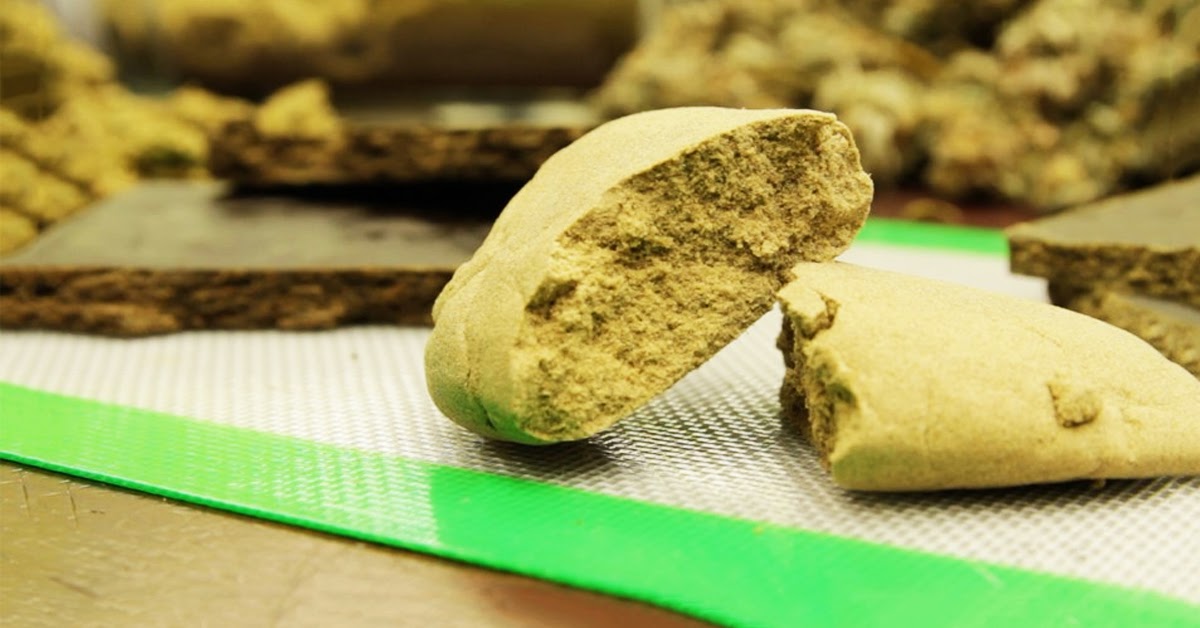We use cookies to make your experience better. To comply with the new e-Privacy directive, we need to ask for your consent to set the cookies. Learn more.
Unravelling the Variety: Your Ultimate Guide to Navigating Through the World's Diverse Hash Types
A Journey Through The Diverse World of Hash
As the popularity of cannabis continues to rise, an ancient cannabis concentrate, hashish, is making a resurgence. Despite the buzz around modern cannabis extracts like BHO, many people forget about hashish, one of the oldest cannabis concentrates in the world. Hash, as it's often referred to, is produced widely throughout the Middle East to Asia. Each region adds its unique flair to this highly sought-after product. In this article, we explore the diverse world of hash, examining its origins and different types from around the globe.
The Origins of Hashish
Hashish, or hash, is an ancient cannabis concentrate that has played a significant role in numerous cultures. From the Middle East to India and the foothills of the Himalayas, hashish has been produced for centuries. However, it wasn't until the 18th century that hash made its way to Europe, becoming popular among the literary and artistic elite. Today, hash remains a favorite way to consume cannabis, largely due to its unique flavor, consistency, and effects.
Different Types of Hash from Around the Globe
Though most forms of hash share more similarities than differences, each provides a unique experience distinct from the others. Let's delve into the diverse types of hash you can find worldwide.
Afghan Hash
Cannabis indica is native to Afghanistan and grows wildly all around the country. The Afghan people have been cultivating and using cannabis for centuries. The hashish trade in Afghanistan really took off in the 60s and 70s when the Hippie Trail brought an influx of young tourists to the region. Today, Afghanistan is the largest producer of hashish in the world.
In Afghanistan, hashish is called chars. Its production is unique, involving removing the trichomes from dried cannabis buds to create kief (locally called garda). This is then placed on a metal dish over a low flame and mixed with small amounts of hot water and/or tea until it reaches a dough-like consistency. The dough is then kneaded by hand and sometimes even pressed by foot until it achieves a black color with a thick, fudge-like consistency.
Good-quality Afghani hash comes stamped with the seal of the producer and is notoriously potent. It is also distinctly spicy and very harsh on the throat, producing a strong, almost narcotic stone that’ll leave you glued to the couch for hours.
Charas
Charas is a unique type of hash originating from India. Unlike other types of hash, charas is made using live cannabis. Live buds are rolled between the palms of the hands, and over time, the resin from the flowers forms a thick, brown layer on the palms and fingers, which is collected and rolled into balls.
The result is a soft, creamy hash that’s very dark on the outside and a lighter brown or green color on the inside. Charas also has a distinctive aroma and flavor that is very, very spicy. It is quite potent and tends to produce an intense body stone characterized by deep, physical relaxation.
Kashmiri Hash
Kashmir, the northernmost region of the Indian subcontinent, is renowned for its hash and opium. While there’s little information about Kashmiri hash, its production is believed to be similar to that of charas. However, it is much more aromatic, spicier, and makes for a slightly harsher smoke. It is also more potent and tends to produce a strong physical stone.
Lebanese Hashish
Lebanon has a rich history with hashish. Today, the country produces massive amounts of hash, with annual exports estimated to be worth over $200 million. Lebanon produces most of its cannabis in the Bekaa Valley. The plants usually dry out in open fields before being cut down, taking on a yellow, brown, or reddish color.
Once dried, the buds are run through sieves to create kief and then pressed. The result is thick slabs of brittle hash with a yellow or red color (sold as yellow or red Lebanese, respectively).
Lebanese hash has a very spicy aroma, is very potent, and typically makes for a harsh smoke. Yellow Lebanese, which is believed to be made from younger plants, tends to produce a slightly more cerebral high, while red Lebanese (made from older plants) tends to be more narcotic.
Manali Hash
Manali is one of the oldest villages in India, and it's revered for its hashish. The hash produced in Manali is known as Manali Cream, which is considered a delicacy throughout India and even internationally.
Manali Cream is made like charas, by rubbing live cannabis buds between the hands to create a thick resin. The result is a black hash that’s soft when fresh and hardens over time. Its flavors and aromas are very reminiscent of fresh cannabis buds. Like charas, this is a mild hash that makes for a delicious and smooth smoke, without the spice you’d find in Afghani or Lebanese varieties.
Moroccan Hash
Cannabis has been cultivated in Morocco for centuries and is believed to have been brought to the area between 640 and 710 AD. Today, Morocco is renowned for its hash, which is made by beating dried cannabis branches over fine sieves to separate the trichomes and create kief. This kief is then heated and pressed repeatedly into bricks.
The resulting hash can vary in color, ranging from dark green to brown depending on the age of the plants and how long they were dried. Moroccan brick hash tends to be hard and brittle, resembling chocolate. Moroccan pollen hash, on the other hand, is much softer, similar to marzipan.
Good-quality Moroccan hash will be very aromatic and smooth, without the spicy aromas and flavors that characterize hash from other countries. Moroccan hash tends to produce a nice, uplifting high and contains rather mild concentrations of THC.
Nepalese Hash
Nepal is a beautiful region nestled among the Himalayas. Like India, Afghanistan, and other parts of the region, cannabis grows naturally here, and the plant has long played an important role in local culture.
Hash in Nepal is made like charas and rolled into big balls sold as “temple balls”. The Nepalese hash is sticky and creamy with a pungent, spicy aroma. It makes for a very smooth smoke when compared to Afghan hash and boasts a big, bold flavor. Nepalese Hash is very potent and produces a strong body stone. Like Manali Cream, Nepalese temple hash is a delicacy at Amsterdam coffeeshops.
Pakistani Hash
While hash is illegal in Pakistan, it is produced and readily available all throughout the country’s northern tribal territories. Hashish has long been part of Pakistan’s culture, and the quality of Pakistani hash can be very good.
Northern Pakistan locals refer to top-grade hash as Awal Namber Garda (“top-grade dust”). The process for making Pakistani hash is very similar to that used in Afghanistan. Pakistani hash is black, has a very spicy aroma, and is notoriously harsh on the throat. It produces a very strong, long-lasting, narcotic stone that’ll leave you glued to the couch for hours on end.
Turkish Hash
Turkey also produces some fine hash. While cannabis is illegal in the country, its cultivation and production are allowed in many provinces for medical and/or research purposes.
Turkish hash is produced in a similar fashion to Afghan, Pakistani, or Moroccan hash; by pressing and heating large amounts of kief into big, black blocks. Turkish hash tends to be of mild potency and produces a unique cerebral high rather than the strong physical stone you’d expect from hash.
Hash from Hydrocarbons – BHO
Butane Hash Oil (BHO) is a modern and more complex form of hash. It involves using butane gas to extract the THC and other cannabinoids from the cannabis plant. The result is a highly potent concentrate that can take various forms, including shatter, wax, budder, and crumble, depending on the specific extraction process.
Other Types of Hash
There are also other types of hash, such as Bubble Hash or Ice Water, Hash from Hydrocarbons – BHO, CBD Rocks And Hash from Hempati, Himalayan Charas, Elephant Hash, Moon Rocks, Ice Rocks, and Rosin. Each type of hash has its unique production method, color, texture, potency, and effects.
Conclusion
As we've seen, hash is a diverse world, with each type offering a unique experience. From the ancient hand-rolled Charas to the modern BHO extracts, the journey of hash is a testament to human ingenuity and the ever-evolving relationship with the cannabis plant. Whether you prefer the mellow high of Turkish hash or the potent effects of Afghan, there's a type of hash out there for every cannabis enthusiast.





